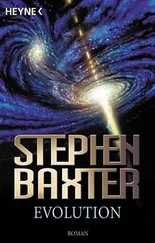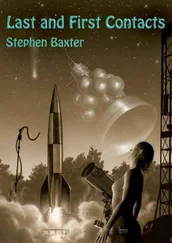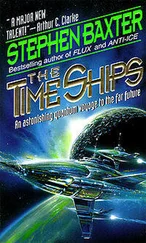A logical early project using asteroid resources would be the construction of a solar power plant in Earth orbit. The high-technology components of the plant, such as guidance, control, communications, power conversion and microwave transmission systems, would be assembled on Earth. The massive low-tech components, cables, girders, bolts, fixtures, station-keeping propellants and solar cells, would all be manufactured in space from asteroid materials. The plant would produce energy, safe, clean, pollution-free, to be sold back to Earth.
This isn’t fantasy. Schemes to exploit the NEOs are approaching the feasibility of business plans; hard-headed entrepreneurs are considering ways to reach these mines in the sky. And once we get there, resources and power are going to start flowing down from the sky to the Earth.
Perhaps this is how we will save the world from an Avatar- style ecocide. In Part One we looked at the bottleneck we face on Earth: a bottleneck caused by diminishing resources, and the diminishing capacity of Earth’s environment to withstand the disturbances we are causing to extract those resources. If population continues to grow—and, just as significantly, if we continue to aspire to a better standard of living for all of us—we’re going to need economic growth, which means a growth in the usage of resources. And maybe space resources, extracted without further impact to the Earth, could be a way through the bottleneck.
Maybe it doesn’t have to be the way Jake Sully bleakly summarised it to Eywa. Maybe there is a way for us to keep the Earth green, without giving up our civilisation and all the benefits it brings: by using the resources of space.
What if we keep expanding? Beyond the moon, beyond the NEOs, what riches lie waiting further out in the solar system?
Let’s follow the water. We need a lot of ingredients to live, but water is by far the most fundamental.
It turns out that the whole of the inner solar system out to Mars—planets, near-Earth asteroids and all—could supply only enough water for maybe fifty billion people. That’s a lot, but only six or seven times the number of people alive today—or, put another way, seven billion people consuming seven times as much resource each.
Happily there is a lot more water in the outer solar system. There are a vast number of asteroids in the main belt, orbiting between Mars and Jupiter, perhaps ten billion larger than a hundred metres in diameter, and a hundred billion between ten and a hundred metres across. They are rich in water, metals, phosphates, carbon, nitrogen, sulphur. The main-belt asteroids could contribute about half the water available on Earth, vastly expanding mankind’s opportunities for growth.
The main belt may not be the most interesting territory to prospect asteroids, however. The asteroids tend to occur in groups, shepherded by orbital resonances with the planets. Some of the most significant groups are known as the Trojan asteroids. These are not in the main belt but in Jupiter’s orbit, at the so-called Lagrange points, points of gravitational stability. As a result the Trojans are comparatively close together; by comparison, the main belt asteroids are spread over an orbit wider than that of Mars.
And the Trojan asteroids are rich. It is believed that the asteroid mass available in the Trojans is several times greater than that in the main belt itself. Not only that, they seem to be even more volatile-rich than the C-type asteroids and comet nuclei. Some analysts think the Trojans might prove to be the richest single resource pool in the solar system.
Beyond the asteroids, ambitious prospectors could settle on the moons of the outer planets, some of which are little more than giant balls of water-ice. A single ice moon has around forty times as much water as all Earth’s oceans. The last planet to be discovered, Pluto (though it’s no longer regarded as a planet at all) is believed to be but one of a whole cloud of similar objects, icy worldlets and massive comet nuclei, circling silently in the dark. The cloud may extend some hundred thousand times as far as Earth is from the sun—that’s halfway to Alpha Centauri. The cloud may have a mass as much as ten times all the planets in the solar system combined…
What a vision this is! Water is only one of the resources waiting for us out there. Imagine an interplanetary civilisation, the solar system transformed by baby RDAs into a savage competitive arena of giant mining vessels, plying the space lanes and dismantling moons—a sky full of Pandoras.
But you might hope that amid all this industry we will find it in us to preserve the natural wonders of the solar system. Including our very own Pandora.
7
THE WONDERS OF THE WORLDS
We’ve sent unmanned spacecraft to inspect all the planets of the solar system save distant Pluto, and have landed on several of them, including moons. And what we’ve found everywhere we’ve looked is wonderful—even if it’s not always what we expected (though that in itself is great news for a scientist).
Where might we go, not in search of resources, but for the sheer wonder of exploration?
Even the humble moon has its wonders. For example, at the moon’s north pole, at a crater called Peary, there are mountains where the sun never sets. These “Peaks of Eternal Light” are believed to be the only site in the solar system where this is true. It comes about because the moon’s axis isn’t tilted relative to the plane of its (and Earth’s) orbit around the sun, unlike Earth’s tilt, which is the cause of our seasons.
Mars may have no egg-laying princesses as in Burroughs’ books. But it is a small, strange world, very unlike the Earth, with volcanic mountains so tall they stick out of the atmosphere, and a canyon system that stretches around half the planet, and valleys that look as if they were carved by flowing water. Right now there are robots working up there, machines built by human hands rolling across the desiccated seabeds. And, we’re increasingly suspecting, maybe there’s life there after all. (In the Avatar universe there are human colonies on Mars.)
Venus is a world only a little smaller than Earth, but swathed in a monstrous ocean of atmosphere, almost all of it carbon dioxide, a bright layer that utterly blankets the ground from our view. It’s so hot down there that at night the ground glows in the dark. But, astonishingly, despite the (literally) infernal conditions, human craft have made it here too. The Soviets achieved a landing with Venera 7 in 1970, a spacecraft as tough as a miniature AMP suit. A very Russian achievement!
One of the general wonders of the age of planetary exploration is that the solar system is turning out to be full, if not of Earths, at least of abodes where some form of life is conceivable. Consider Jupiter’s second moon out. Europa is close enough to its parent for tides to have melted a deep layer of the moon’s water-ice mantle. Its cracked icy crust looks like nothing so much as ice floes on Earth’s frozen-over Arctic Ocean, beneath which is a sea, tremendously deep, perhaps reaching all the way to the moon’s rocky core. And hydrothermal vents on that black-as-night seabed could provide nutrients for some form of life. A world with a roof.
And, a little further out, is a mysterious world that may be the solar system’s greatest wonder of all.
The furthest any craft from Earth has landed, so far, is on Titan, sixth moon of the sixth planet Saturn, nearly ten times as far from the Earth as the sun. It was an astounding achievement.
And the world the Huygens probe found is the solar system’s own Pandora.
Titan, Saturn’s largest moon, was discovered by the Dutch astronomer Christianus Huygens in 1655. To him it was just a dot of light, glowing dull orange. But in 1944 Gerard Kuiper, another Dutch astronomer, discovered methane gas there. This was a moon with air! Titan turned out to have the most massive atmosphere of any rocky world after Venus. Bigger than our moon but only half the diameter of Earth, Titan is able to retain a fat layer of air because of its extreme cold.
Читать дальше










